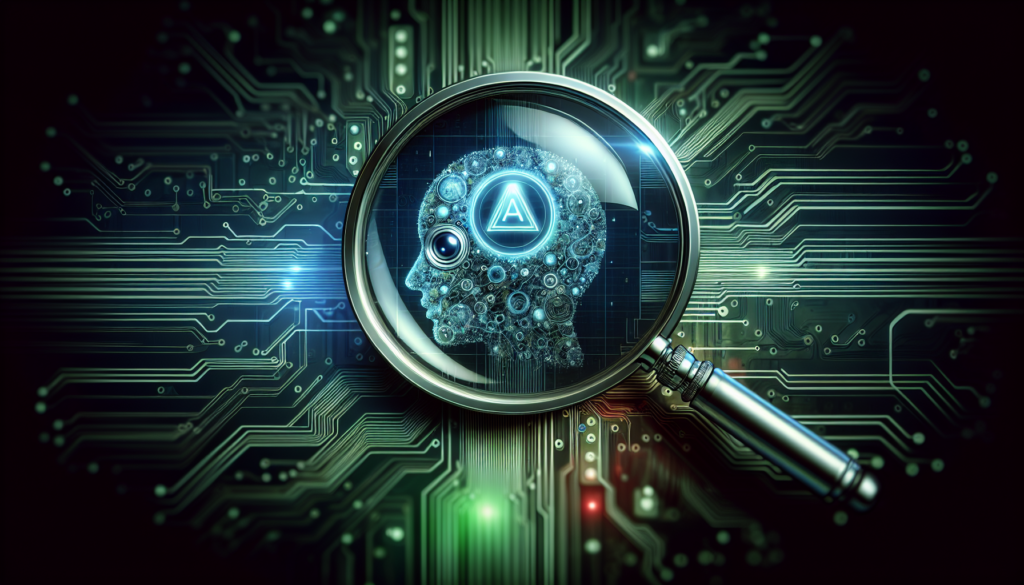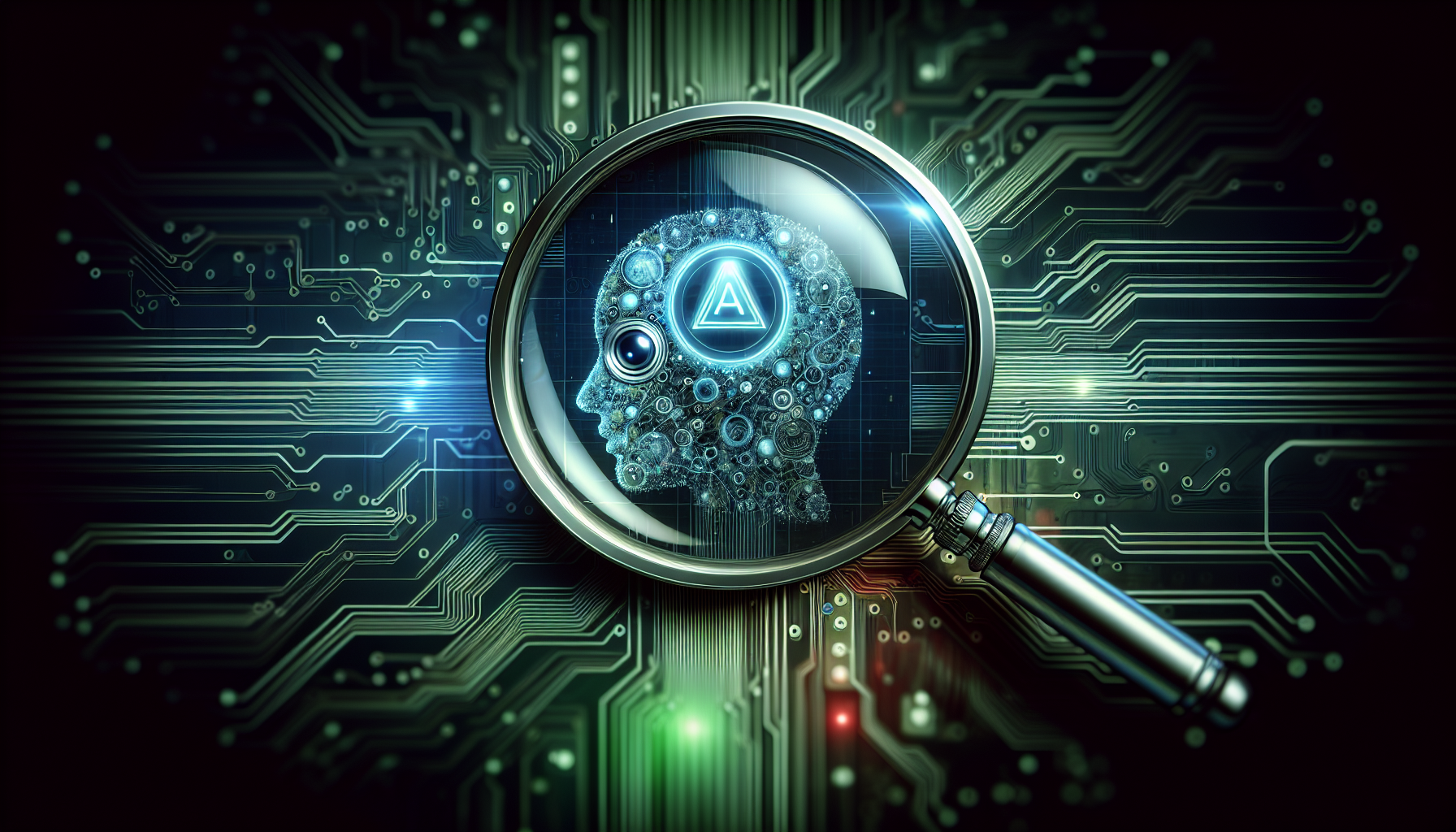Have you ever wondered about the distinction between machine learning and AI? While the terms are often used interchangeably, they actually represent two distinct concepts in the world of technology. Machine learning involves the development of algorithms that enable machines to learn from data and improve their performance over time. On the other hand, AI, or artificial intelligence, is a broader term that encompasses the ability of machines to perform tasks that typically require human intelligence. In this article, we will explore the key differences between machine learning and AI, shedding light on the unique aspects of each and how they work together to shape our increasingly intelligent world. So, let’s uncover the nuances and demystify these intriguing concepts!

Definition of AI
The concept of Artificial Intelligence
Artificial Intelligence (AI) is the field of computer science that focuses on the development of intelligent machines that can perform tasks that typically require human intelligence. AI aims to create machines that can reason, learn, and solve problems, mimicking human cognitive abilities. It involves the study and development of algorithms and models that enable computer systems to exhibit intelligent behavior.
AI as a field of study
AI is not just a concept, but a full-fledged field of study that encompasses various subfields and disciplines. It draws upon knowledge from computer science, mathematics, psychology, linguistics, and engineering to develop intelligent systems. Researchers and practitioners in AI work on techniques and methodologies to build machines and software that exhibit attributes such as natural language processing, problem-solving, learning, and decision-making.
Definition of Machine Learning
Machine Learning defined
Machine Learning (ML) is a subset of AI that focuses on the development of algorithms and statistical models that allow computer systems to learn and improve from experience without being explicitly programmed. Unlike traditional programming, where rules or instructions are explicitly defined, ML algorithms learn and make predictions from patterns and data. ML algorithms aim to automatically identify and apply patterns and models hidden in the given data to make predictions or take actions.
Types of Machine Learning algorithms
Machine Learning algorithms can be classified into three main types: supervised learning, unsupervised learning, and reinforcement learning. Supervised learning uses labeled data to learn patterns and make predictions, while unsupervised learning deals with unlabeled data to discover hidden patterns and structures. Reinforcement learning involves learning through trial and error by receiving feedback or rewards for actions taken.
Relationship between AI and Machine Learning
The connection between AI and Machine Learning
AI and Machine Learning are closely connected. Machine Learning is a subset of AI, and it serves as one of the fundamental building blocks of AI systems. AI encompasses a broader field that includes other techniques like expert systems, natural language processing, computer vision, and robotics, among others. Machine Learning, on the other hand, focuses on developing algorithms and models that enable machines to learn from data.
How Machine Learning is a subset of AI
Machine Learning is a subfield within AI that deals with the development of algorithms and models that allow machines to learn from data and make intelligent decisions. In the broader context of AI, Machine Learning plays a crucial role in enabling machines to perceive and understand the world, reason and solve problems, and interact with humans. It provides the underlying technology and methodologies for many AI applications and systems.
Scope and Applications
The scope of AI
The scope of AI is vast and covers a wide range of applications and domains. AI systems can be applied in various sectors such as healthcare, finance, transportation, manufacturing, and entertainment. They can be used for automated diagnosis, predictive analytics, natural language processing, autonomous vehicles, intelligent robots, and virtual personal assistants, among many other applications. AI has the potential to revolutionize industries and improve efficiency, accuracy, and decision-making processes.
The scope of Machine Learning
Machine Learning has a broad scope within the field of AI. Its applications are diverse and span across domains such as healthcare, finance, e-commerce, cybersecurity, and recommendation systems. Machine Learning techniques can be used for image and speech recognition, spam detection, fraud detection, personalized recommendations, sentiment analysis, and predictive maintenance, among others. The scope of Machine Learning continues to expand as new algorithms and approaches are developed.
Applications of AI
AI has numerous applications in various industries. In healthcare, AI systems can assist in medical diagnosis, drug discovery, and personalized treatment plans. In finance, AI algorithms can be used for fraud detection, algorithmic trading, and risk analysis. In transportation, AI enables the development of autonomous vehicles and traffic management systems. AI also plays a significant role in virtual assistants, gaming, customer service chatbots, and cybersecurity, among many other fields.
Applications of Machine Learning
Machine Learning finds applications in a wide range of domains. In healthcare, ML techniques can be used for predicting disease outcomes, analyzing medical images, and drug discovery. In e-commerce, ML algorithms drive personalized recommendations and targeted advertising. In cybersecurity, ML can detect anomalies and identify potential threats. ML is also used in natural language processing, computer vision, sentiment analysis, predictive maintenance, and many other areas where data-driven decision-making is essential.

Approach and Techniques
The approach used in AI
AI adopts a multidisciplinary approach, combining knowledge and techniques from various fields. It encompasses approaches such as symbolic reasoning, knowledge-based systems, and machine learning. Symbolic reasoning involves using logical rules and expert knowledge to solve problems and make deductions. Knowledge-based systems use knowledge representation and reasoning techniques to provide expert advice. Machine learning, as mentioned earlier, allows systems to learn from data and improve performance over time.
The approach used in Machine Learning
Machine Learning focuses on data-driven approaches and relies on statistical techniques and algorithms. Instead of explicitly programming rules, ML algorithms learn patterns and models from data. They employ techniques such as regression, classification, clustering, and deep learning to analyze datasets and make predictions or decisions. The approach in Machine Learning involves selecting appropriate features, choosing algorithms, training models with data, and fine-tuning parameters to optimize performance.
Techniques in AI
AI encompasses various techniques and methodologies. These include rule-based systems, expert systems, natural language processing, computer vision, robotics, and neural networks, among others. Rule-based systems use predefined rules to make decisions, while expert systems employ knowledge from domain experts for problem-solving. Natural language processing enables AI systems to understand and generate human language. Computer vision allows systems to interpret and analyze visual data. Robotics involves building intelligent machines capable of physical interactions. Neural networks simulate the functioning of the human brain and enable complex pattern recognition and learning.
Techniques in Machine Learning
Machine Learning employs a range of techniques to learn patterns and make predictions. These include linear regression, decision trees, support vector machines, neural networks, and deep learning. Linear regression finds relationships between variables, while decision trees create hierarchical decision rules. Support vector machines classify data into separate categories using a margin-based approach. Neural networks are inspired by the human brain and have layers of interconnected nodes that allow for complex pattern recognition. Deep learning involves training neural networks with multiple hidden layers to learn intricate representations from data.
Data and Training
Data requirements in AI
AI systems require large volumes of diverse and high-quality data for training, validation, and testing. The data should be representative of the problem domain and cover various scenarios. It should be labeled or annotated with the correct outputs for supervised learning tasks. The data should also be preprocessed to handle missing values, outliers, and noise. Collecting and curating data is a crucial step in developing AI models as the performance and accuracy of the system heavily rely on the quality of the data.
Data requirements in Machine Learning
Machine Learning algorithms are heavily data-driven and require labeled or unlabeled data for training. Labeled data, with inputs and corresponding outputs, is required for supervised learning. Unlabeled data is used in unsupervised learning to find hidden patterns or structures. The quality and quantity of the data play a significant role in the performance of ML models. Data preprocessing techniques such as feature selection, normalization, and handling missing values are necessary to prepare the data before feeding it into ML algorithms.
Training in AI
Training in AI involves the process of feeding the AI system with data and optimizing its algorithms or models to learn from that data. It includes steps such as data collection, preprocessing, feature engineering, model selection, and fine-tuning. The training process aims to minimize errors and maximize performance by adjusting model parameters or updating weights. Training may involve iterative processes and validation to ensure the accuracy and generalizability of the AI system.
Training in Machine Learning
Training in Machine Learning refers to the process of optimizing ML models using data. It involves splitting the data into training and testing sets, with the latter used to evaluate the model’s performance. ML models are trained by feeding them with the training data and adjusting their internal parameters to minimize errors or maximize a defined objective function. The training process may involve tuning hyperparameters, cross-validation, and regularization techniques to prevent overfitting.
Decision Making
Role of AI in decision making
AI plays a significant role in decision making by providing intelligent systems and algorithms that can analyze data, learn from patterns, and make informed decisions. AI systems can process and analyze vast amounts of data quickly and accurately, identifying trends and insights that may not be apparent to human decision-makers. By automating decision-making processes, AI systems can optimize efficiency, reduce errors, and support complex decision-making tasks in various domains.
Role of Machine Learning in decision making
Machine Learning plays a crucial role in decision making by providing algorithms that can learn from data and make predictions or classification decisions. ML models can analyze historical data or real-time information to identify patterns and trends, enabling decision-makers to make informed choices. ML techniques such as predictive analytics, recommendation systems, and anomaly detection contribute to reliable decision making in domains such as finance, healthcare, marketing, and cybersecurity.
Human Interaction
Human interaction in AI
AI systems aim to interact and communicate with humans in a natural and human-like manner. Natural language processing techniques enable AI systems to understand human language, generate responses, or engage in dialogue. AI-powered virtual assistants and chatbots strive to mimic human conversation and provide assistance or information. Human interaction with AI systems may involve voice commands, text-based input, or visual interfaces, depending on the application.
Human interaction in Machine Learning
In Machine Learning, human interaction is essential for the preparation and labeling of training data. Humans play a role in curating datasets, selecting features, and labeling instances, which act as inputs for training ML models. Human experts are also involved in defining the objectives and evaluating the performance of ML models. Moreover, the results generated by ML algorithms are often interpreted and acted upon by humans, who make decisions based on the insights and predictions provided by the models.
Limitations
Limitations of AI
AI systems possess certain limitations that need to be considered. One limitation is the potential for bias in AI algorithms if the training data is biased or unrepresentative. Another limitation is the inability of AI systems to have true understanding or consciousness like humans. AI systems may also struggle when faced with novel or unforeseen situations that deviate from the patterns they have learned from. Moreover, AI systems may lack ethical judgment and the ability to make moral decisions.
Limitations of Machine Learning
Machine Learning also has its limitations. ML models heavily rely on the quality and quantity of the training data. If the data is insufficient, biased, or unrepresentative, ML models may yield inaccurate or biased predictions. ML models may also struggle with interpretability, meaning it can be challenging to understand and explain why a model makes a particular decision. ML models can also be vulnerable to adversarial attacks, where deliberately crafted inputs can deceive the model’s predictions.
Future Prospects
Potential advancements in AI
The future of AI holds immense potential for advancements in various aspects. AI systems may become more intelligent and efficient as research progresses in areas such as deep learning, reinforcement learning, and cognitive computing. The integration of AI with other emerging technologies like Internet of Things (IoT) and blockchain can lead to innovative applications and systems. Ethical considerations, privacy, and security will also play a crucial role in shaping the future of AI.
Potential advancements in Machine Learning
Machine Learning is poised for exciting advancements in the future. Improving algorithms and models, such as deep neural networks and generative adversarial networks, can lead to more accurate and robust predictions. The development of explainable AI and interpretable ML models can provide insights into why and how ML models make decisions. Reinforcement learning and unsupervised learning techniques are also expected to advance, enabling ML models to learn from sparse or unstructured data.
In conclusion, AI and Machine Learning are closely connected, with Machine Learning serving as a subset of AI. AI encompasses a wide range of techniques and approaches, while Machine Learning focuses on developing algorithms and models that enable machines to learn from data. Both AI and Machine Learning have vast scopes and applications, ranging from healthcare and finance to robotics and natural language processing. Data plays a crucial role in both AI and Machine Learning, requiring careful collection, preprocessing, and training to build accurate models. Decision-making and human interaction are important aspects of both AI and Machine Learning, with AI systems aiming to mimic human-like behavior and ML models aiding in informed decision making. However, it is essential to acknowledge the limitations and address ethical concerns as AI and Machine Learning continue to advance. With potential future advancements, AI and Machine Learning hold promising prospects for revolutionizing industries and enhancing human lives.
